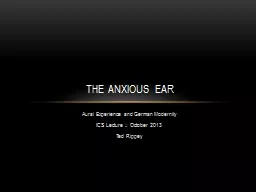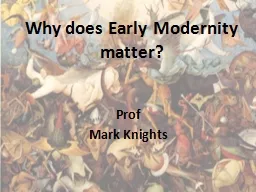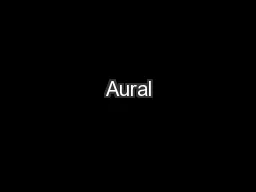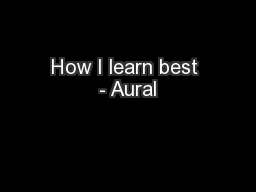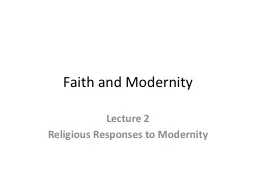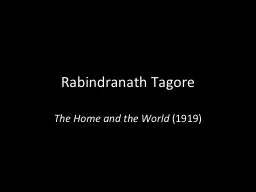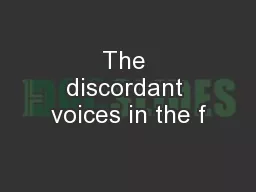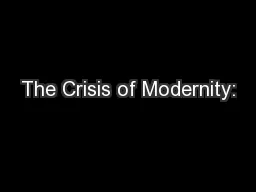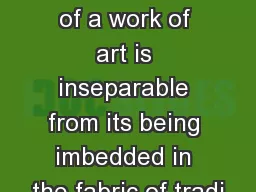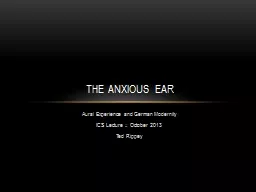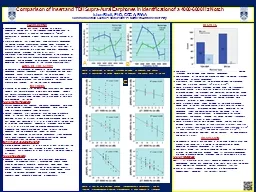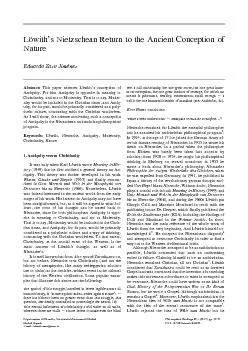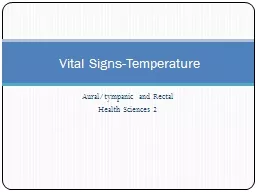PPT-Aural Experience and German Modernity
Author : celsa-spraggs | Published Date : 2015-09-17
ICS Lecture October 2013 Ted Rippey The Anxious Ear listen You are present in a soundscape Just as in visual perception we see things where they are out there in
Presentation Embed Code
Download Presentation
Download Presentation The PPT/PDF document "Aural Experience and German Modernity" is the property of its rightful owner. Permission is granted to download and print the materials on this website for personal, non-commercial use only, and to display it on your personal computer provided you do not modify the materials and that you retain all copyright notices contained in the materials. By downloading content from our website, you accept the terms of this agreement.
Aural Experience and German Modernity: Transcript
Download Rules Of Document
"Aural Experience and German Modernity"The content belongs to its owner. You may download and print it for personal use, without modification, and keep all copyright notices. By downloading, you agree to these terms.
Related Documents

